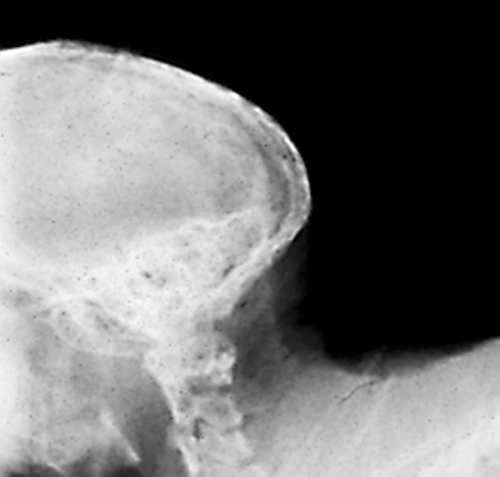Difference between revisions of "Small Mammals Q&A 19"
| Line 3: | Line 3: | ||
|- | |- | ||
| align="center" | [[File:Manson_logo.gif|90px|Mansonlogo]] | | align="center" | [[File:Manson_logo.gif|90px|Mansonlogo]] | ||
| − | | align="left" | This question was provided by [[:Category:Manson|Manson Publishing]] as part of the [[OVAL Project]]. See more [[Category: Small Mammals Q&A|Small Mammals questions]] | + | | align="left" | This question was provided by [[:Category:Manson|Manson Publishing]] as part of the [[OVAL Project]]. See more [[:Category: Small Mammals Q&A|Small Mammals questions]] |
|} | |} | ||
<br><br><br> | <br><br><br> | ||
| Line 28: | Line 28: | ||
|a4= Although the need for vitamin D3 rather than vitamin D2 is commonly understood, the high dietary requirement in this species is less recognized. Marmosets and some other New World primates have a 1,25 (OH)2 vitamin D3 receptor that is either blocked by a protein or is much less sensitive to vitamin D3. The blood concentration of vitamin D3 needs to be high to compensate for the presence of this blocking protein. | |a4= Although the need for vitamin D3 rather than vitamin D2 is commonly understood, the high dietary requirement in this species is less recognized. Marmosets and some other New World primates have a 1,25 (OH)2 vitamin D3 receptor that is either blocked by a protein or is much less sensitive to vitamin D3. The blood concentration of vitamin D3 needs to be high to compensate for the presence of this blocking protein. | ||
Maintain a high blood concentration of vitamin D3 in the marmoset by administering approximately 1,100 iu/kg/day (compared to 11 iu/kg/day in dogs) of vitamin D3. In addition, expose New World primates to unfiltered sunlight to encourage production of vitamin D3 in the skin. It is may be possible to provide some UV light using daylight spectrum light bulbs. | Maintain a high blood concentration of vitamin D3 in the marmoset by administering approximately 1,100 iu/kg/day (compared to 11 iu/kg/day in dogs) of vitamin D3. In addition, expose New World primates to unfiltered sunlight to encourage production of vitamin D3 in the skin. It is may be possible to provide some UV light using daylight spectrum light bulbs. | ||
| − | |l4= | + | |l4= Hyperparathyroidism#Treatment |
</FlashCard> | </FlashCard> | ||
Latest revision as of 15:11, 16 August 2011
| This question was provided by Manson Publishing as part of the OVAL Project. See more Small Mammals questions |
This is a lateral radiographic view of the caudal skull of a common marmoset.
| Question | Answer | Article | |
| What metabolic bone disease is demonstrated in this radiograph? | Bone resorption is shown, caused by excessive secretion of parathyroid hormone due to secondary nutritional hyperparathyroidism, which is often seen in this species.
In this case, there was insufficient dietary intake of vitamin D3 (New World primates require vitamin D3, not D2) which produced insufficient intestinal absorption of calcium. As blood calcium concentration falls, parathyroid hormone concentration rises to mobilize calcium from the bones into the circulation. Although low calcium intake and kidney disease can also cause this type of bone resorption, the principal cause in captive common marmosets is lack of dietary vitamin D3. |
Link to Article | |
| What clinical signs might you see when this condition is present? | When bone resorption becomes severe, captive primates become inactive and move slowly about their cages due to pain, muscle weakness and pathologic fractures. The teeth become loose resulting in eating difficulties.
|
Link to Article | |
| How would you confirm the diagnosis? | Radiograph the caudal skull and long bones.
If possible, obtain a normal long bone or skull taken from a healthy monkey at necropsy. Take a radiograph with the normal bone placed next to the patient. A comparison of bone density can be made that is independent of between-film variations in exposure. Obtain a blood sample to detect low serum calcium concentration. An ionized calcium concentration is a more sensitive test than total serum calcium. Absolute confirmation of the diagnosis is possible by measuring blood parathyroid concentration. Some test kits used in humans are suitable. Parathyroid hormone concentration up to 10 times normal can be seen. |
Link to Article | |
| How would you treat the condition? | Although the need for vitamin D3 rather than vitamin D2 is commonly understood, the high dietary requirement in this species is less recognized. Marmosets and some other New World primates have a 1,25 (OH)2 vitamin D3 receptor that is either blocked by a protein or is much less sensitive to vitamin D3. The blood concentration of vitamin D3 needs to be high to compensate for the presence of this blocking protein.
Maintain a high blood concentration of vitamin D3 in the marmoset by administering approximately 1,100 iu/kg/day (compared to 11 iu/kg/day in dogs) of vitamin D3. In addition, expose New World primates to unfiltered sunlight to encourage production of vitamin D3 in the skin. It is may be possible to provide some UV light using daylight spectrum light bulbs. |
Link to Article | |
